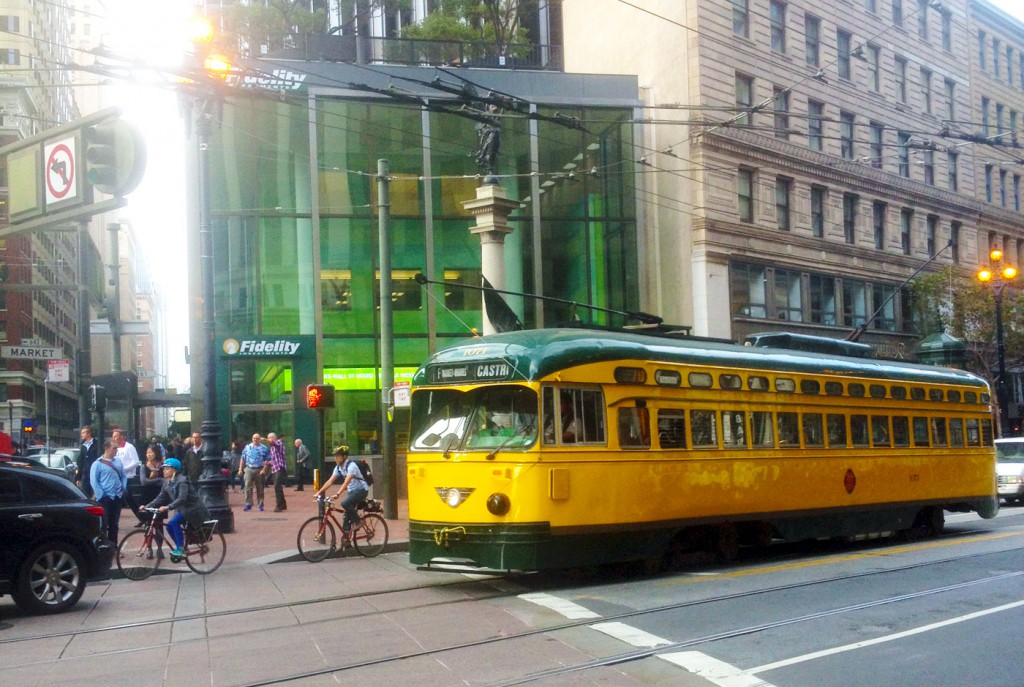
I had the distinct pleasure of taking one of John S. Adams final course on American Cities in 2002. He is one of the pioneer urban planners in academia who in 1970 proposed four distinct eras of transportation which shaped and defined American housing, infrastructure, and life. His energetic and sometimes enigmatic lessons left me empowered on understanding and perhaps influencing the course of American cities.
- First Era: Walking-Horsecar Era 1800-1890 – When cities established on railways and river landings, people only moved as far as they could walk. The horsecar, a re-appropriation of a typical horse buggy was the most the commoner could dream of for public transit.
- Second Era: Recreational Automobile Era 1925-1950 – Cars were just coming into fashion but like Lord Grantham remarked, soon every Tom, Dick, and Harry would soon have one. Any freeway that seems especially beautiful, windy, or picturesque in your city came from this era. It probably took an hour to go a few miles due to congestion on city/county roads.
- Third Era: Electric Streetcar Era 1890-1920 – This was the golden age of public transit, when those tracks started moving people at fast and efficient clip. Planners and officials today who yearn for a transit-orientated culture typically are referencing this period.
- Fourth and Present Era: Freeway Era 1950-present – Urban renewal criss-crossed our cities and created the suburban development patterns we see today. This era marked a major expanse into the “hinterlands” around formerly dense built cities.
The four eras remind me of other scales like the human civilization type that astronomer’s use. It’s an exponential curve and we barely rate a Type I because we have absolutely no harnessing technological power when it comes to the galaxy. In a way I feel the same could be said of the Freeway Era which he lamented we are sadly still stuck in. Even the advent of the jet airplane has exacerbated reliance on freeways, forcing us to build out and around servicing airports. It was originally thought that airplanes would allow us to be globe trotters, less reliant on home bases. The opposite is true, airplanes deliver thousands of people to settle in attractive cities.

If we are to look into the future, it’s my hope the Freeway Era can give way to a fifth era. Perhaps this new era is the Technological Transportation Era. Adams’ uses housing development patterns as evidence for his eras. For this new era, we see early evidence that suburban housing demand has slowed and urban redevelopment has increased. I say these are attributed to technological improvements, hence the name.
- Changing Land Use Patterns. Technology is continuing to blur the need for location-based live, work, and play. In turn cultural preferences are being influenced by lifting of this picket-fence illusion. It’s clear the next generation of Americans will halt sprawl.
- New Infrastructure. Technology in regards to transit infrastructure is also accelerating, with offering of multiple attractive transit modes and methods not present before. Modern streetcar, light rail, and bus rapid transit make fixed transit seamless to implement and use. Bicycling facilities are also evolving with protected bikeways, regional bike freeways, and bike sharing systems.
- Improved Access to Information. Technology on the user side enables all information all the time. In addition to a plethora of public transit apps, users can now instantly hail for private taxis (“rideshare”), find private transit, rent hourly cars, rent scooters, and arrange for carpools.
The soon to be reality driverless cars may likely represent the final and lasting impact of this Technological Transportation Era. In a way I feel the driverless car could not have happened without the prior advents above, because for example without ubiquitous smartphones providing us hand-held information, it would be difficult to access such services.
However I will say knowing Adams and his current work on regional governance and policy, this fifth era cannot happen in a void. It requires cooperation both on public and private interests to further infrastructure and policy that allows for these new technologies to flourish and adapt. I’m sure he wouldn’t throw in the towel yet over the current era.